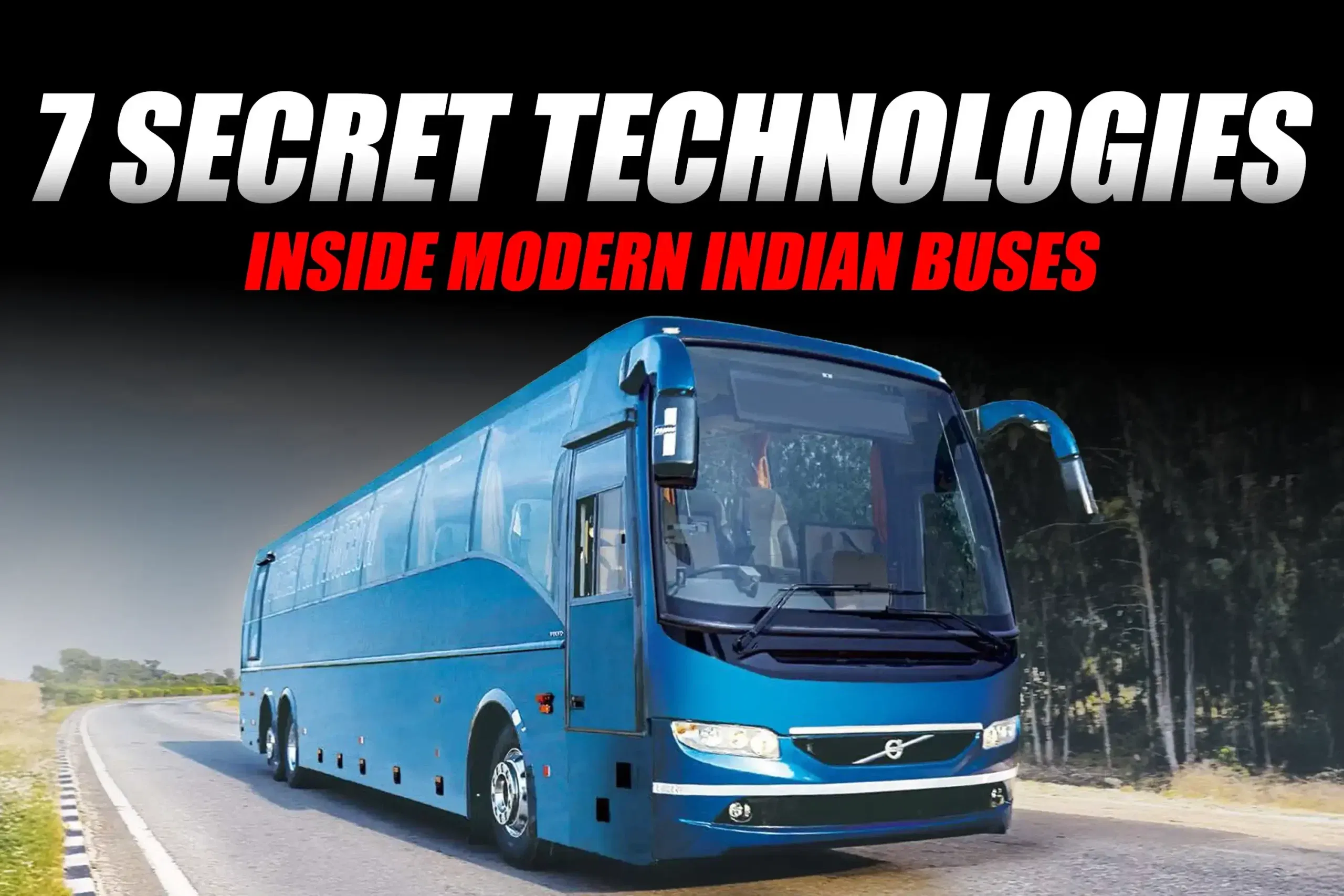India's transportation industry changes rapidly. New commercial buses transport not only passengers, they incorporate technologies that enhance safety, comfort and efficiency. Passengers see seats and air conditioning. Operators depend on invisible systems that determine bus technology 2025 and maximize trips. These are seven hidden technologies that affect how passengers ride and how the fleet runs in modern Indian buses.
1. Telematics and Real-Time Monitoring
Modern buses include telematics systems. These kinds of devices keep an eye on the position, speed, fuel use and condition of the engine. Operators use this information to plan routes, save money on fuel and stay on schedule. Telematics is also used by mid-range fleets in 2025. Mobile apps let people find buses and tell them when they will arrive. Telematics connects operational data to the needs of commuters.
2. Advanced Driver Assistance Systems (ADAS)
ADAS, which stands for "advanced driver assistance systems," are now standard on buses. They include lane departure alerts, collision warnings and blind-spot recognition. These devices help drivers all the time, which keeps them from getting tired and stops accidents. Even standard commercial vehicles now adopt basic ADAS in 2025, showing a growing focus on passenger and driver safety.
3. Smart HVAC and Air Quality
Comfort depends on smart HVAC systems. They change the temperature and airflow according to how many people are on board. Dust, allergies and pollutants are all removed by high-quality air filters. Some buses can adjust individual zones so that each passenger is comfortable in their own way. These systems make long-distance trips better for your health and your enjoyment.
4. Electric and Hybrid Power
Sustainability influences buses technology 2025. Electric buses don't make noise and don't pollute. Hybrid buses use both combustion engines and electric motors to make them work better. Battery management systems keep an eye on energy, make sure it's used to its fullest and make sure it works. Buses are still reliable on long or tough trips.
5. Passenger Information and Entertainment
Modern commercial buses integrate digital displays, infotainment and Wi-Fi. Passengers access route updates, news, safety alerts and entertainment content. Touch screens and USB ports are standard on luxury buses. Operators might use these for advertising or to offer other services. Technology turns boring rides into interesting and interactive ones.
6. Advanced Suspension and Ride Comfort
Air suspension and electronically regulated shock absorbers make the ride better. The bumps and vibrations are smoothed out, which helps keep passengers from getting too tired. Operators like that their buses last longer and cost less to maintain. Smooth rides highlight how engineering can make things more comfortable and more efficient at the same time.
7. Predictive Maintenance and AI Diagnostics
Modern buses use AI-powered predictive maintenance. Sensors keep an eye on the brakes, engines and transmission. AI looks at data and predicts problems before they happen. Operators prepare repairs ahead of time, keep breakdowns to a minimum and keep everyone safe. Not just high-end fleets, but also mid-range commercial buses are also using predictive maintenance.
Final Thoughts
Modern Indian buses combine safety, comfort and efficiency. India 2025 buses will have new technology including telematics, ADAS, smart HVAC, electric drives, infotainment, enhanced suspension and AI-based maintenance. Operators are able to be efficient, save money and follow the rules. Passengers have rides that are safer, smoother and more connected. New buses are becoming the standard for Indian transit since they are cheap and technology is becoming more widely available.
For more articles and news, stay updated with 91trucks. Subscribe to our YouTube channel and follow us on Facebook, Instagram, and LinkedIn for the latest videos and updates from the automotive world!









